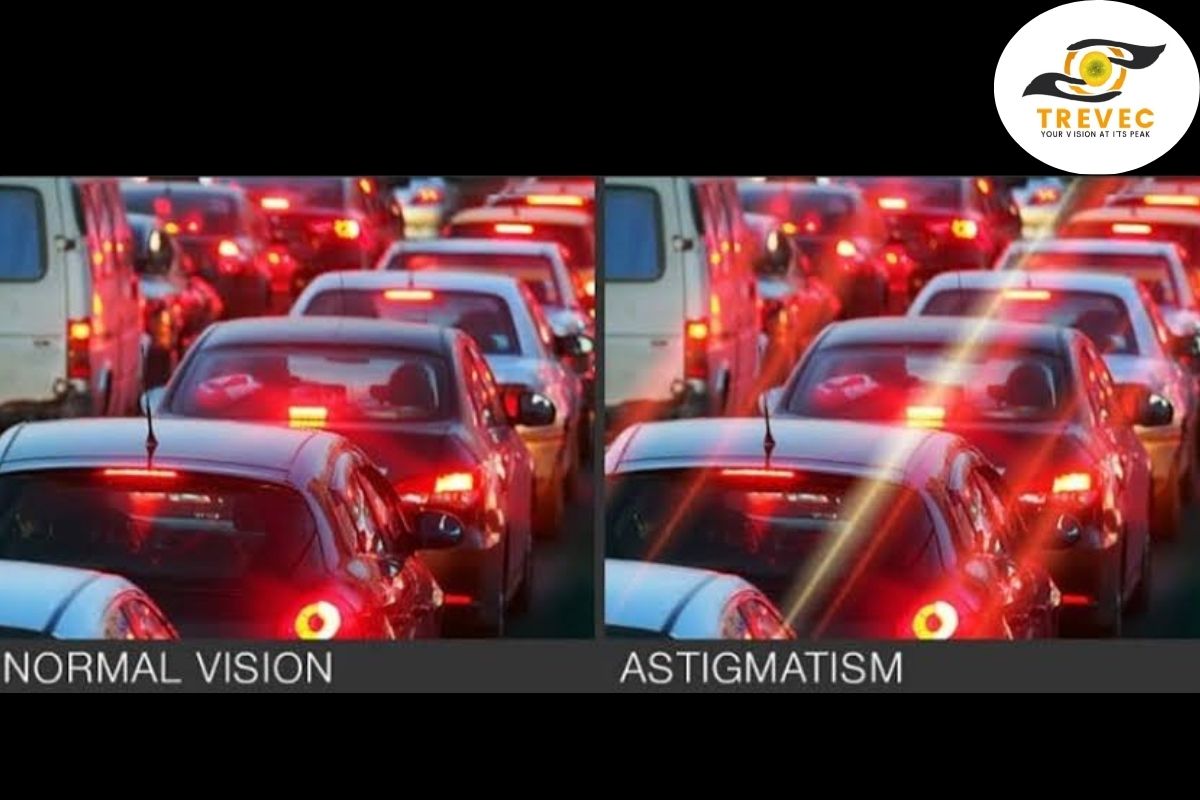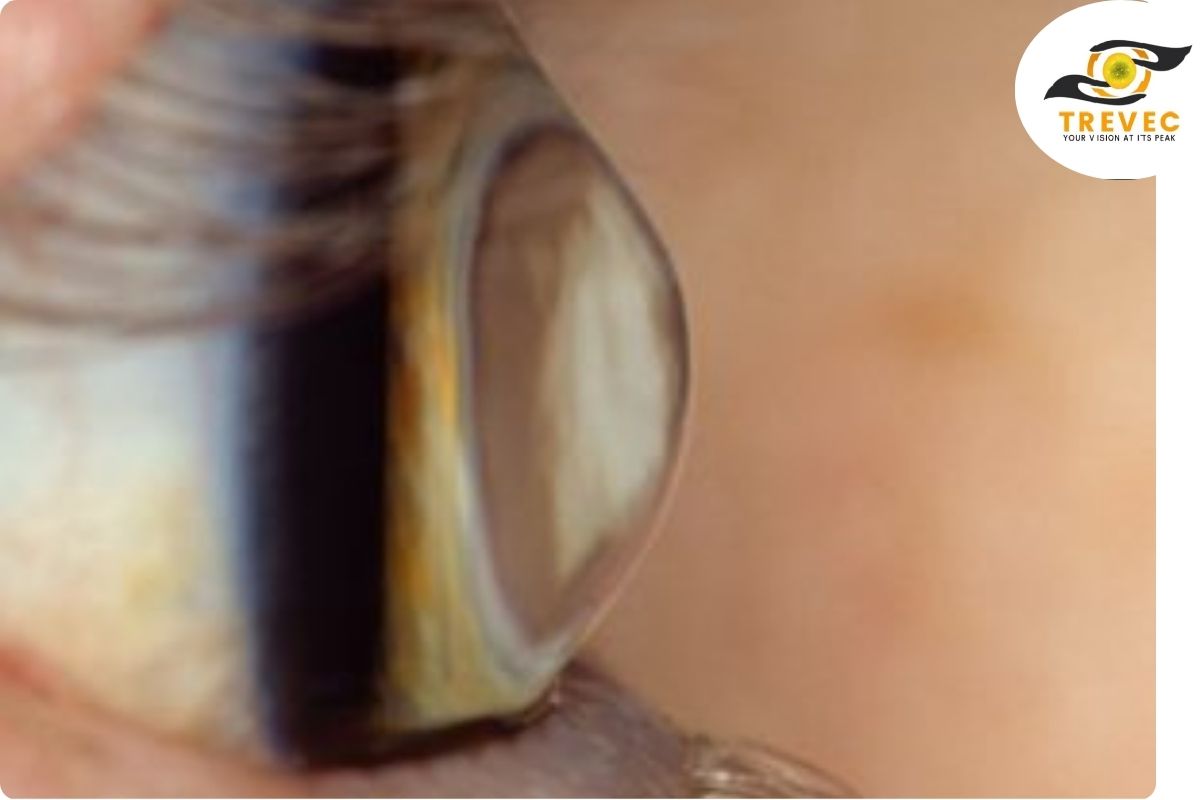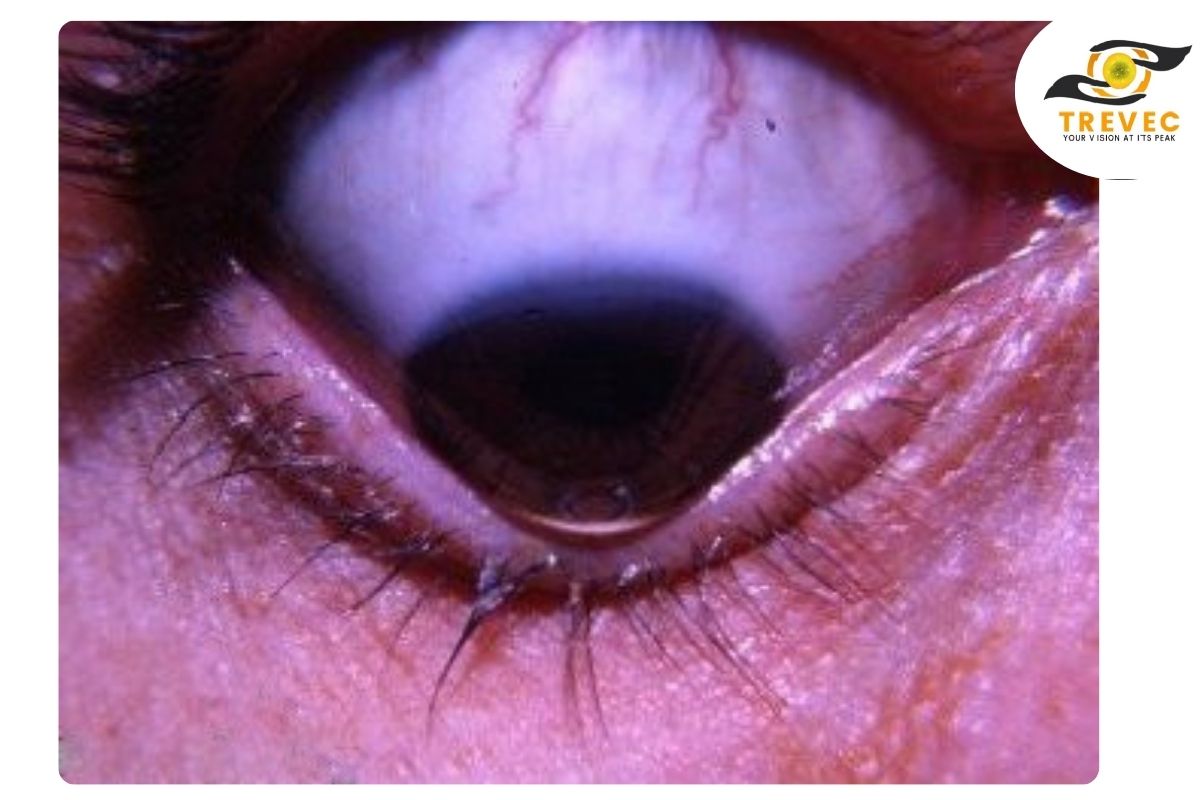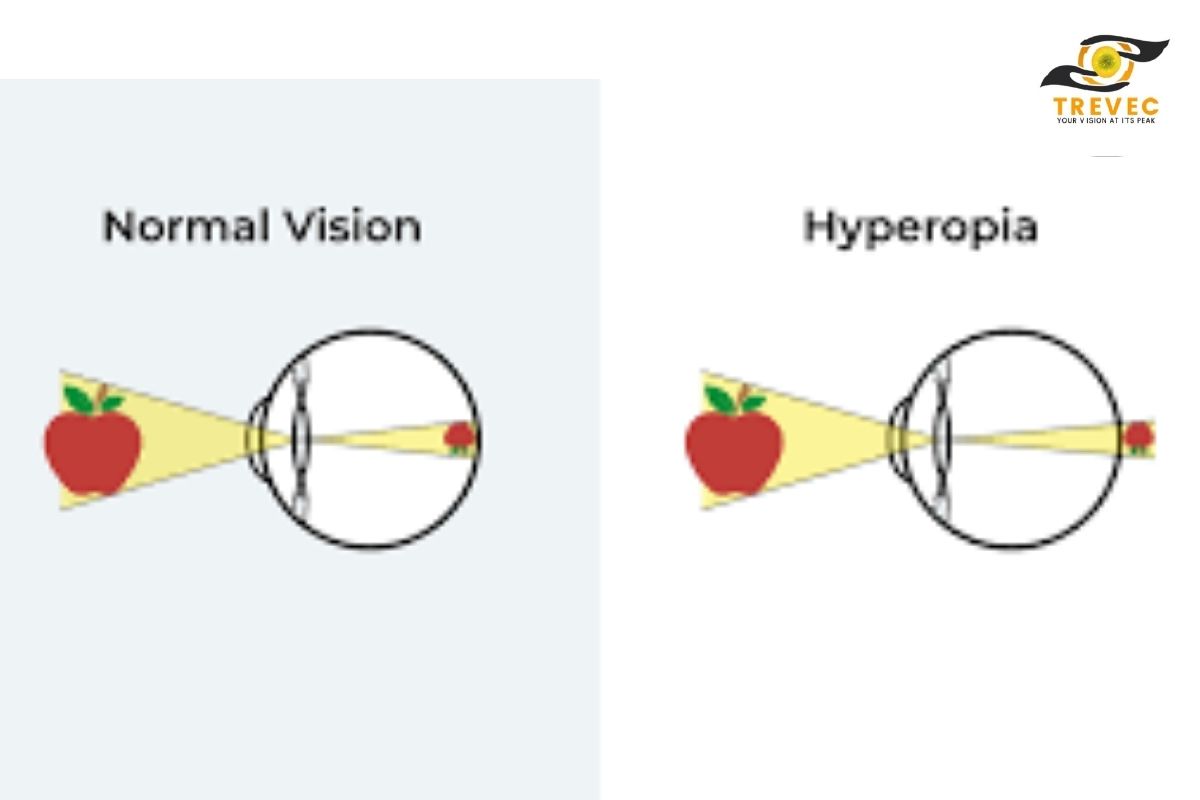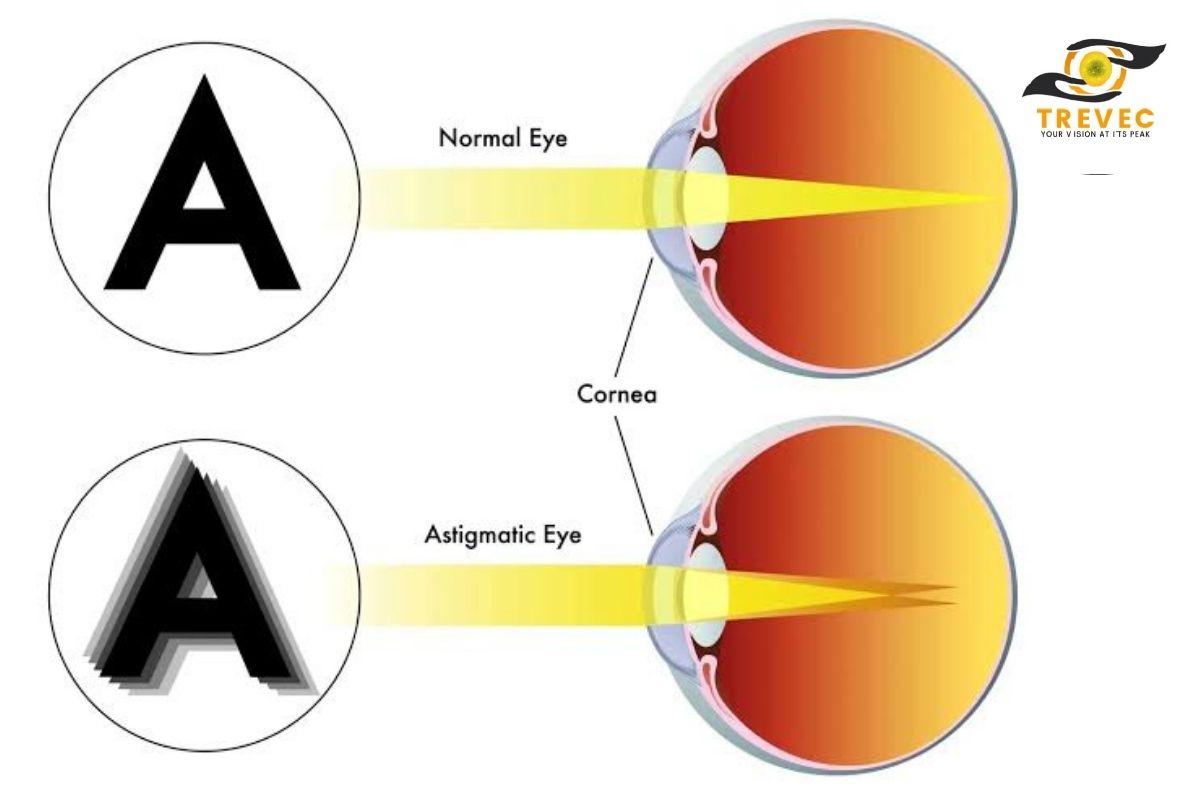Introduction
Astigmatism is a common vision problem caused by an error in the shape of the cornea. Imagine looking at the world through a slightly warped mirror, where shapes seem stretched, blurred, or distorted. For millions of people, this is a daily reality.
Sarah, a 27-year-old graphic designer, often found herself squinting at her computer screen. At night, the headlights of oncoming cars appeared streaky and blurred, making driving uncomfortable. She assumed she was just tired from working long hours. But after a routine eye exam, Sarah discovered she had astigmatism, a condition she had unknowingly lived with for years.
Like Sarah, millions of people experience the effects of astigmatism every day, often mistaking it for general tiredness or poor lighting. The good news is that this condition is common, easily diagnosable, and treatable.
What is Astigmatism?
Astigmatism is a refractive error of the eye, meaning the eye does not bend (refract) light evenly. Normally, the cornea and lens have a smooth, round curve that allows light to focus clearly on the retina. The curvature is irregular, resembling a football more than a basketball.
This irregularity causes light rays to focus on multiple points in the eye rather than a single sharp point, leading to blurred or distorted vision at near, far, or both distances.
Types
- Corneal Astigmatism: Caused by an irregularly shaped cornea.
- Lenticular Astigmatism: Caused by irregularities in the eye’s lens instead of the cornea.
- Regular Astigmatism: The cornea is curved unevenly but symmetrically in one direction, and can usually be corrected with glasses or contact lenses.
- Irregular Astigmatism: The curvature is uneven and asymmetrical, often caused by injury, keratoconus, or surgical complications. It requires specialized lenses for correction.
Symptoms
- Blurred or distorted vision at all distances
- Double vision in severe cases
- Headaches after reading or using screens
- Eye strain and fatigue
- Difficulty with night vision
- Squinting to improve clarity
Children with undiagnosed astigmatism may struggle with reading, learning, or paying attention in school, highlighting the importance of early screening.
Causes and Risk Factors
It can be present from birth or develop later in life. Causes include:
- Genetics: it often runs in the family
- Keratoconus: a progressive eye condition where the cornea thins and bulges
- Eye injuries: trauma can alter corneal curvature
- Eye surgery: procedures like cataract surgery may change the corneal shape
- Irregular eye development: many are born with a slightly misshapen cornea.
Risk Factors:
- Family history
- Previous eye trauma or surgery
- Certain eye diseases (keratoconus, pterygium)
Stay tuned to learn more about the treatment and management in our next post.
For all eye-related concerns, visit us at TREETOP VISION EYE CENTRE (TREVEC), the best eye clinic in Utako, Abuja.
TREVEC CARES!!!


